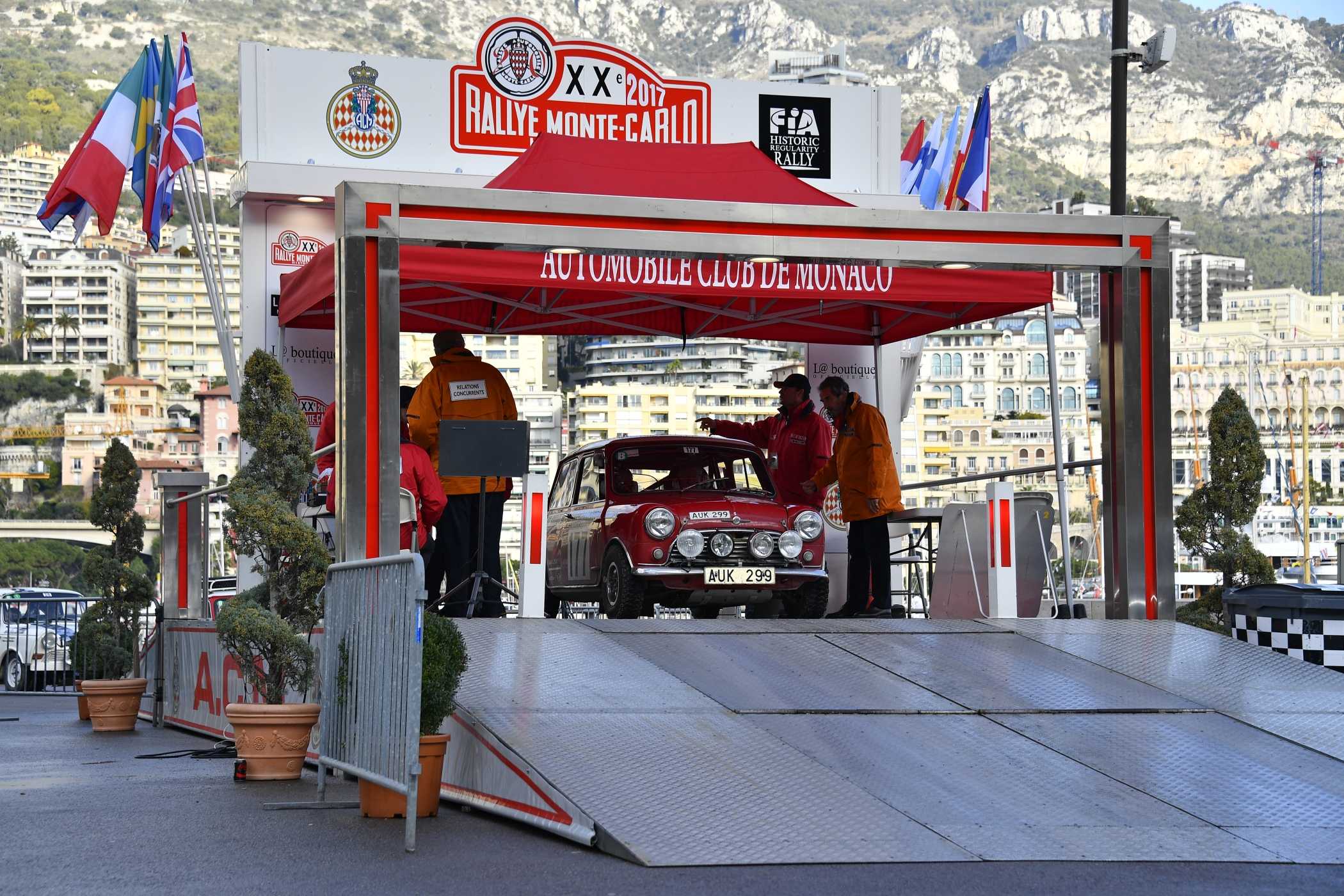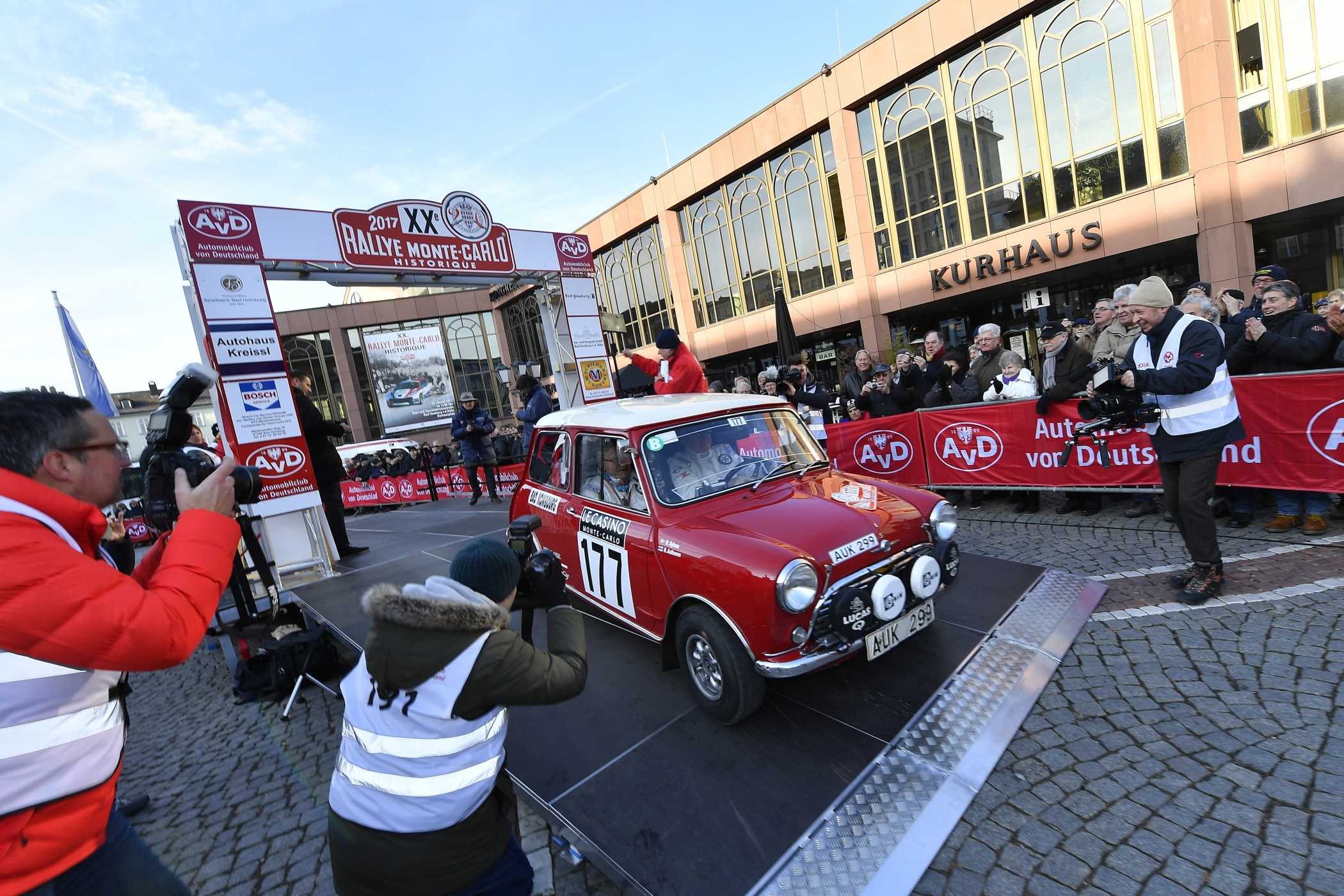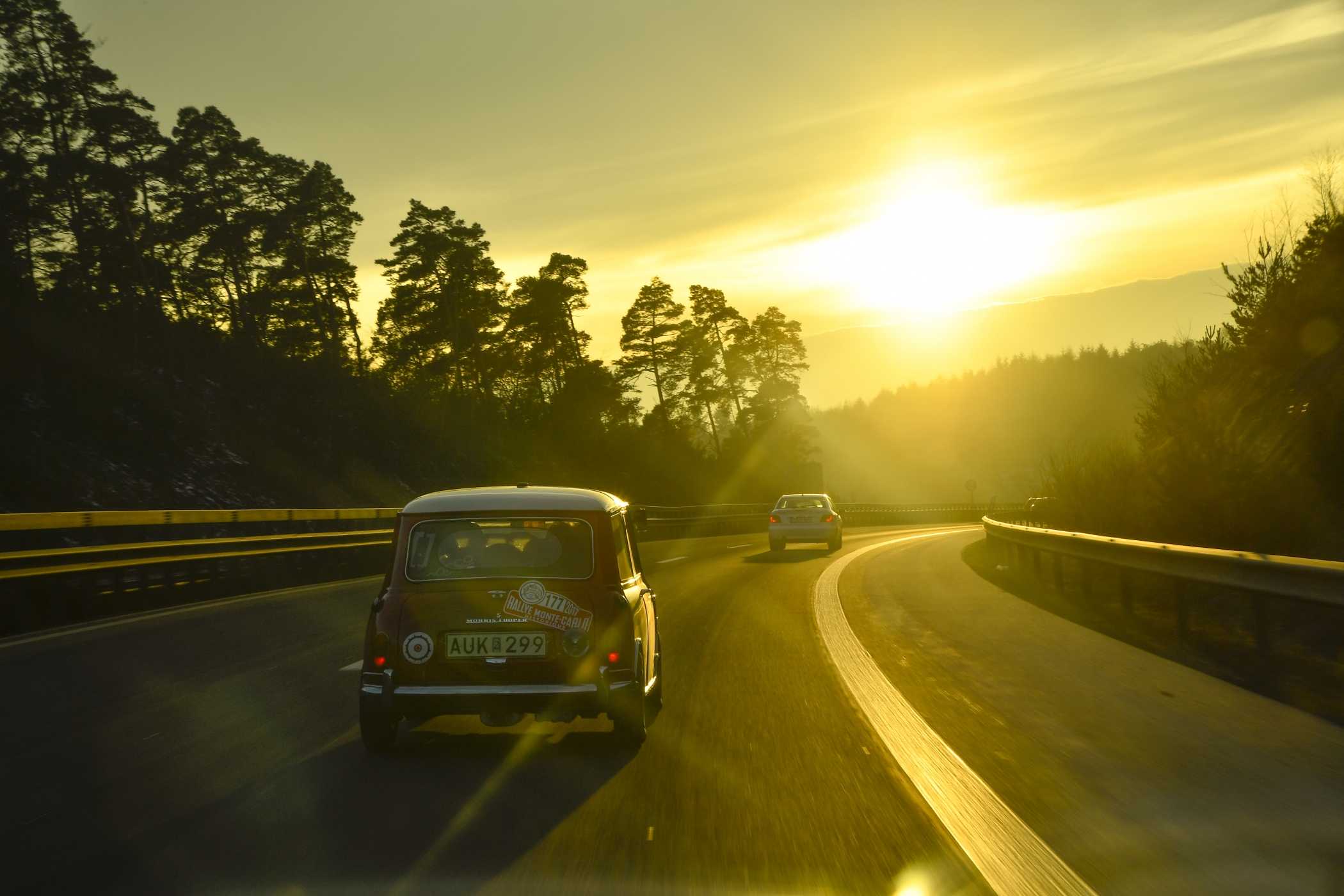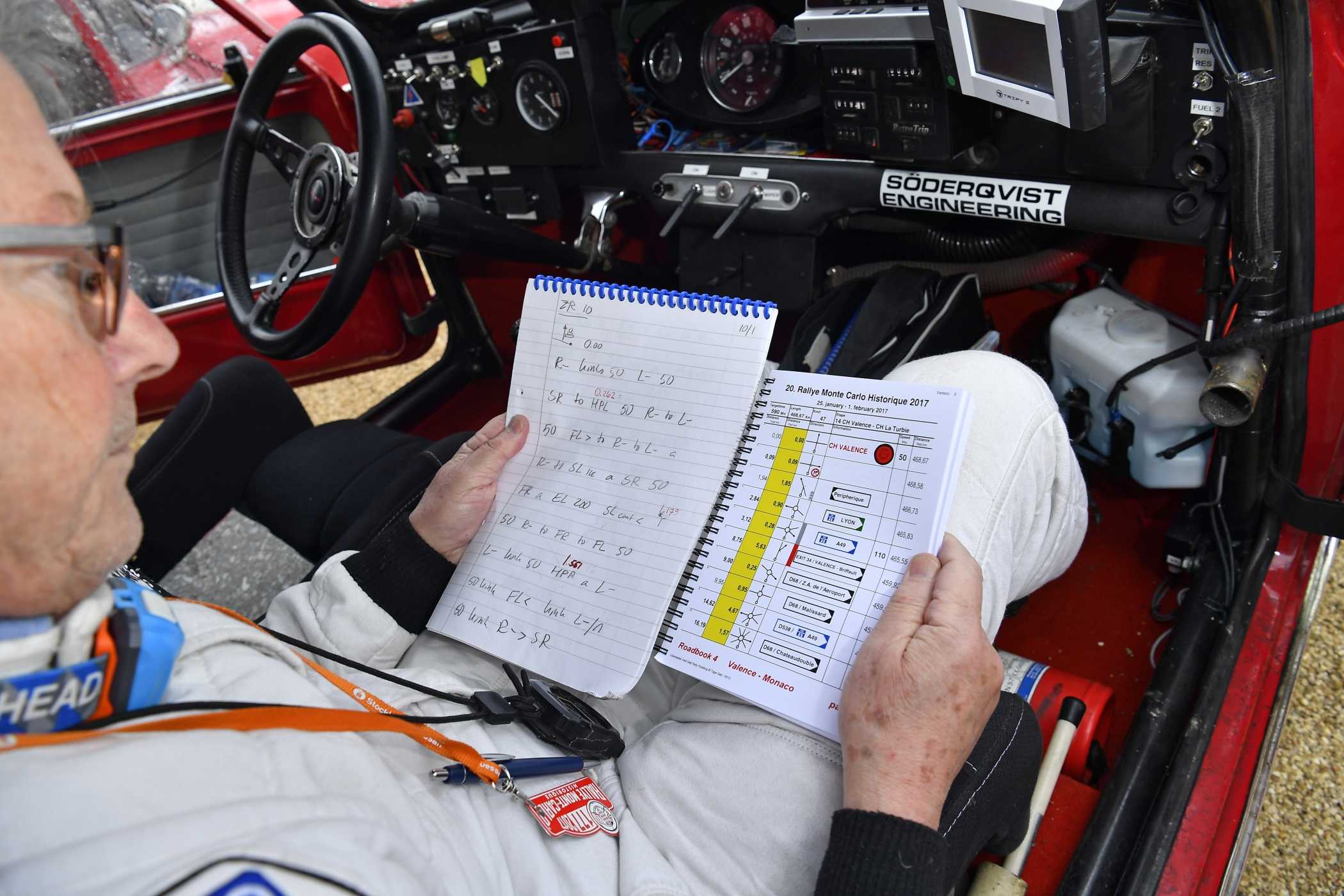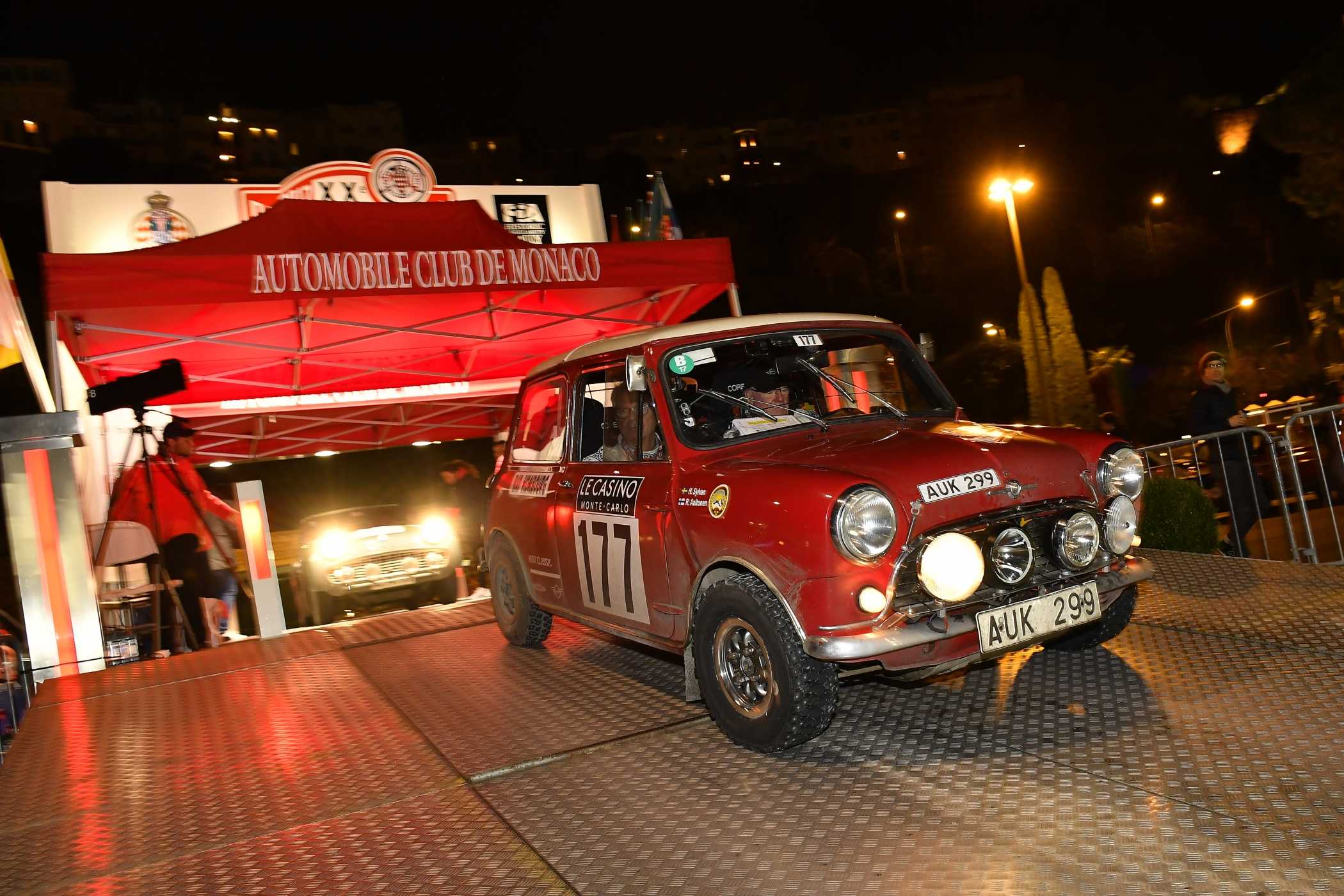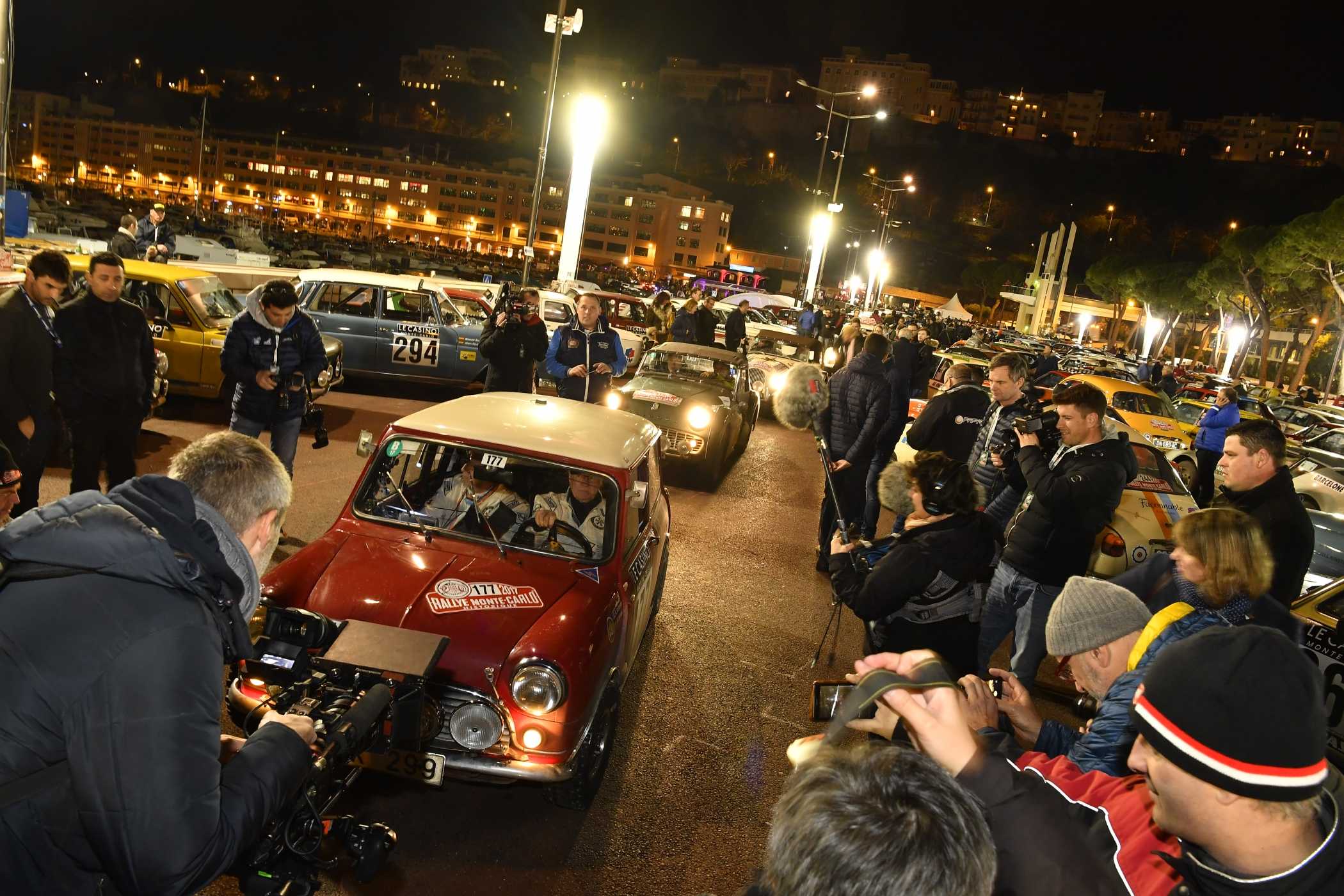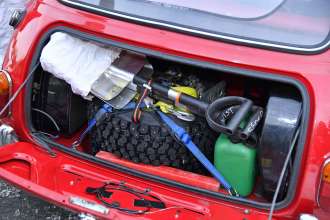The Monte Carlo Rally is the most famous event of its kind – arguably by some distance – and brings together the world’s best rally drivers for a serious test of their mettle and endurance. The Rallye Monte-Carlo Historique retrains the spotlight on the heroes of years past and their cars, which have taken so much punishment yet still come back for more. Fifty years ago, Finland’s Rauno Aaltonen celebrated victory here in a Mini Cooper S. And now he was back, in a period rally car beloved of motor sport fans everywhere. As we found out, age has done little to slow either of them down.
The “Monte”. A single word is enough to send reels of dramatic images flickering across the mind’s eye. Illuminated by audacious drifts through snow and ice, twitching beams of light in the blackest of nights and oil-smeared mechanics in the roadside slush, the Monte Carlo Rally has gone down in history as the godfather of all car rallies. It was back in 1911 that intrepid drivers first answered the call to Monte Carlo in its wintry still. In those early years, journeying thousands of kilometres across Europe represented enough of a challenge on its own thanks to the lack of a major road network – not to mention any snow-clearing services. Back then, making it to the Principality in one piece was a victory already.
From gentlemen racers to pros.
The 1950s and 60s saw rallying morph from long-distance tours into full-bore races on closed-road special stages. The amateur privateers of yore were superseded by professional wheelmen and factory teams ploughed increasing resources into their quest for success; after all, victory in the Monte Carlo Rally was advertising gold. The sight of a pint-sized Brit drifting its way to the top of the timing lists ahead of far more fancied saloons and sports cars duly sent waves of excitement through the rally world. The classic Mini stormed to three wins in the Monte, the last of which came in 1967 with Rauno Aaltonen at the wheel.
The Rally Professor.
Catch sight of Rauno Aaltonen in action today and you’d never guess it had been so long since the legendary rally star first put his foot to the floor on roads of gravel and ice. He’s still “got it”, as the saying goes – and usually in greater supply than the youthful protégés on his driving courses. The only way to learn to drift properly is to get out there and practice, and every type of car has its own ways and quirks. The front-wheel-drive classic Mini, for example, wants to be hurled around a corner in a flurry of vigour and left-foot braking.
Aaltonen explains the difference between front- and rear-wheel drive so: “In a front-driver, you’ll hit a tree head-on. In a car with rear-wheel-drive, you’ll hit the same tree, but backwards.” His smile tells you that he didn’t hit a tree very often – and certainly not in a classic Mini.
Starting from Bad Homburg.
The historic Monte is a rally tour in the classical mould of those early events. The teams set out from various towns and cities across Europe – such as Bad Homburg in Germany – on the 1,250-kilometre (770-mile) drive to Monte Carlo, the majority of the journey taking them over small-to-miniscule roads. Awaiting them at their destination were a series of timed sections, many retracing the routes of historic stages, with their deliciously evocative names. Rather than a battle to set the fastest times, though, the Rallye Monte-Carlo Historique is a regularity event – a test of adherence to average speeds and tenths of a second. All of which makes the role of co-driver that much more important, emphasising their ability to work out the numbers while keeping an eye on the bigger picture. Sitting alongside Rauno Aaltonen was the similarly experienced Hans Sylvan, the renowned Swedish co-driver who racked up a string of major victories in the 1970s and 80s.
The Monte weather.
Some editions of the Monte have unfolded as a spectacular show in snow, others have seen spectators shovelling the white stuff onto otherwise dry asphalt to elicit their beloved drift angles – a custom that wreaked havoc with some of the teams. Snow was not an issue this year, wintry flakes conspicuous by their absence. But lady luck was still an every-present factor, even for a meticulously prepared Rally Professor. A minor technical problem with the on-board telemetry at the start of the first section sent the Aaltonen/Sylvan pairing plummeting down the leader-board. At this point, most would have decided to relax and give their car the easiest possible ride for the rest of the event. But that’s not a language this particular flying Finn seems to understand.
Every hundredth of a second counts.
And so the frantic fightback begins. The classic Mini storms its way through the field over the remaining 13 sections, making up 200 places. It’s clear the passage of five decades has singularly failed to dull the endurance, powers of concentration or will to win of these two Scandinavian gentlemen. It’s an ultimately satisfying and enduringly impressive sight. The classic Mini is one of the stars of the event, completing the battering, bruising Monte in technically flawless condition. Chapeau! In historic rallies of this kind, arriving at the finish line often ranks as a fine accomplishment in its own right.
The small car with immense popular appeal.
The classic Mini and its illustrious driver were the darlings of the crowd. It was impressive to witness the cordial charm with which Rauno Aaltonen and Hans Sylvan took the attention in their stride, granting every request for interviews and autographs with gentle aplomb. Aaltonen is 79 now, Sylvan 72. But meet them in the flesh and you’ll swear they are considerably younger.
The Rallye Monte-Carlo Historique was a great success for all involved. This is an event that opens the book once again on stories from yesteryear and tells them in the most captivating way you can imagine. It lets old legends off the leash and showcases the skill and competitive spirit that continues to burn within.
For more visit: https://www.youtube.com/watch?v=r8cNAArTi-w
Note: The dramatic events at the 1966 Monte Carlo Rally, in which the classic Mini finished first, second and third but was subsequently disqualified, are described in detail in our blog post “A SMALL BUT SHINING LIGHT”.
